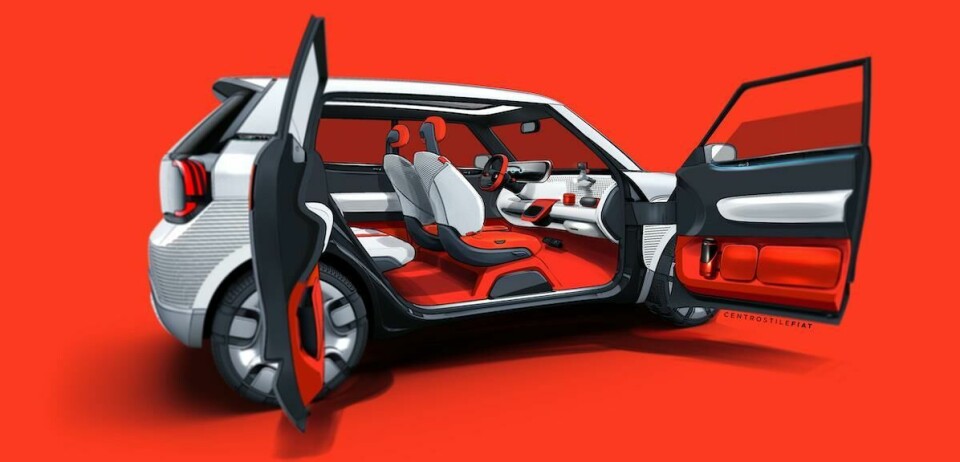
Car Design Review 7: Klaus Busse, FCA
FCA’s Klaus Busse talks about the significance of the Fiat Centoventi and Alfa Romeo concepts, as well as the new Fiat 500
Having two concepts in the Alfa Tonale and Fiat Centoventi at the 2019 Geneva Motor Show was a challenge, but special too. We set up the FCA show stand with a kind of piazza, a focal point, where we presented all of our brands. We didn’t separate them like in years before. That way we were able to represent our multiple approaches on the same stage. Like the Memphis movement, we believe that aesthetics are a very important part of functionality, that the aesthetic itself is a functionality.
Although the Centoventi’s development was very much a product design approach, at the same time it was optimistic too, the Italian approach of putting a smile on the customer’s face and not only the person driving it, but also the people looking at the car.

In 2020 we have already shown two important cars, with a third due soon. The first was a modification of an existing car, the Alfa Romeo Giulia GTA, which shows what a beautiful canvas the base car was and what it allowed us to do. It was very well-received, from Alfa fans and in the wider car-loving community too. That was followed shortly after by the new Fiat 500. At this point only a few people have seen it in real life but there are pre-production cars driving around Turin and it is amazing to view how people react to it.
As a successor to the car considered to be a design icon – the very first Fiat 500 from 1957 is in the Museum of Modern Art in New York – that’s very important. Then the ‘super sports’ Maserati MC20 we show in September will be our third 2020 highlight.
Wider industry highlights from 2019 for me included the new Land Rover Defender. That’s because it’s a competitor to one of our products from the Jeep family but also because I very much related to its clean product design approach.
The Tesla Cybertruck was one of the more important reveals of last year too as it was just so unexpected and outlandish. I assume it was a provocation and Elon Musk recently ‘opened a backdoor’ to say the production version might look much more conventional, but beyond that, to drop this kind of ‘visual grenade’ into the feet of the design community led to a lot of very passionate discussion. For the first time in a long time I felt that designers were willing to take a position on whether they liked a car design or not. The Cybertruck opened up a beautiful debate which I really enjoyed having.
We always need to put design into a social context. Take the new Fiat 500 for example. We spent a lot of time in the initial stages of that project understanding the original car from 1957, the 2007 version and the car we believed we needed for 2020. This happened three years ago, so of course we couldn’t predict 2020 as it really turned out, but we were still able to really give a clear forecast of how we thought the 500 might need to be different in certain features, even in terms of colour.
My role goes beyond creating a design to putting it into context, debating and agreeing it with management, to then make a successful decision and a successful car.
Our Centro Stile studio in Turin in Italy caters for multiple brands – six in total – which are all within the Middle East and Africa region (EMEA). We have heads of design at each brand, but underneath them we can move designers around.
You might find yourself on a Fiat project but when it’s concluded, you could start on a Maserati or Alfa project, or vice versa. You won’t find this opportunity to touch multiple brands anywhere else in the industry and this flexibility is also possible between interior and exterior too.
We’re open to allow people to flow where we feel their talent best matches. Talking of talent, the people who get promoted in my organisation are the ones that challenge me in a professional way, not the ones who just say, ‘Yes Klaus, we will’. This is what has made the teams I’ve worked for successful. We harness the team’s creativity, not just one person’s.
In terms of technology and FCA brands we think the younger generation may prove to be the most demanding consumer. For example an 18-year old is so connected and comfortable in this screen-led, user-experience (UX) world, but rarely do they have the resources to buy a new car. And if they do, it’s usually an entry-level one. So our best UX tech needs to be available in our most cost-sensitive cars. That’s something we are really considering when we think about what tech needs to be in which cars in future.
Will FCA products and their human design approach have an advantage in a hopefully more caring world after the coronavirus situation has eased? I’d like to think so.
There seems to be a Chinese electric car aesthetic established over the last 12-18 months, going in this ‘device’ design direction. They’re difficult to differentiate brand-wise and all have slim horizontal front lights. The new Fiat 500 is all-new and has a ‘skateboard platform’ where we could have done absolutely anything we wanted. But we decided to combine electrification with what we’re known for, which is a human, optimistic and lovable brand.
What better car to represent all these things than a 500?
This article first appeared in Car Design Review 7.
















